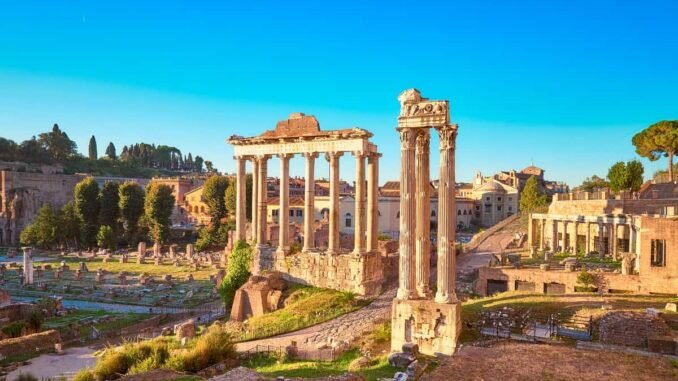
When we look at the extent of the Roman Empire on a map, we can barely imagine that this civilization originated from a small settlement on the Italian Peninsula. Nestled in the central portion of this territory, the city of Rome was born through the efforts of the Latin and Sabine people who, around 1000 BC, would have erected a fortification that would prevent the incursion of the Etruscans.
The little information about the origins of Rome is covered by the classic mythical explanation that attributes its foundation to the action taken by the brothers Romulus and Remus. After the foundation, Rome would have experienced its monarchical period, where the king established his political hegemony over the entire population and had the support of a Council of Elders known as the Senate.
The members of the Senate came from the patrician class, which had control over the region’s large and fertile agricultural properties. Over time, the economic hegemony of this elite allowed the formation of a republican regime in which the Senate assumed the main political responsibilities. Between the 6th and 1st centuries BC, the republican regime guided the political life of Roman citizens.
However, patrician hegemony was gradually opposed by the plebeians who occupied the ranks of the Army and guaranteed the military protection of the Roman domains. Progressively, the plebeian class began to enjoy rights within the republican regime and create laws that addressed the rights and obligations that this social group held.
Despite such reforms, social inequality continued to prevail in a society that increasingly depended on the labor force of its slaves. Territorial conquests enriched the Roman elites and determined the dependence of a mass of commoners who did not find work opportunities. In fact, social tensions were constant and indicated the differences in the Roman world.
Gradually, social tensions increased with the rise of military leaders (generals) who sought to take over the Roman State. The coup attempts signaled the ruin of republican power and followed the path that transformed Rome into an Empire. In the 1st century BC, General Octavius finally managed to establish the imperial order.
During the Empire, we observed the rise of governments that maintained order, as well as other leaders who took advantage of the conquered power. In the 1st century AD, the development of the Christian religion was a fundamental point in the transformation of the Empire. The religious and expansionist doctrine contradicted the beliefs (polytheism) and institutions (slavery) that supported the Roman world.
Around the 3rd century, the advent of barbarian invasions and the interruption of territorial expansion were in favor of the dissolution of this Empire. Despite the defeat imposed on the Romans, their practices, concepts and knowledge are still fundamental for us to understand the nature of the Western world. In a way, all roads still lead us (a little) to Rome.